Forget Flowers: Here’s How to Build a Real Dragonfly Paradise
I’ve been designing gardens that feel alive for a long time, and people always ask me how to bring more critters into their yard. They want the usual suspects—birds, bees, butterflies. But the request that gets me really excited? Dragonflies.
In this article
There’s something magical about their electric colors and wild, acrobatic flight. What most people don’t get, though, is that you can’t just plant a few pretty flowers and expect them to swarm your garden. It just doesn’t work that way. Attracting dragonflies means building them a complete world, from start to finish.
Honestly, I learned this the hard way. Early in my career, I designed this gorgeous garden around a client’s pond. We had nectar-rich flowers everywhere, but the pond itself was sterile and full of fish. We got tons of bees, but barely a single dragonfly. That’s when it clicked: to truly attract a specific creature, you have to provide for its entire life, not just the pretty adult stage. This guide is built on that lesson, sharing the real-deal techniques to create a true dragonfly sanctuary.

First Things First: Understand the Creature
Before you even think about grabbing a shovel, you need to know who you’re inviting over. A dragonfly’s life is a tale of two worlds: water and air. If you only plan for the adult zipping through the air, you’re missing the most important part of the story. The real secret to a yard buzzing with dragonflies is creating a healthy home for their babies.
It all starts when an egg hatches underwater into a nymph (sometimes called a naiad). This is the longest part of a dragonfly’s life—we’re talking anywhere from a few months to several years, depending on the species. These little guys look nothing like the adults; they’re stocky, brown, and built for life on the pond floor.
And let me tell you, they are ferocious little predators. They hunt by shooting out a hinged jaw to snatch up prey like mosquito larvae (yes, really!), tadpoles, and other tiny aquatic critters. This is why a dragonfly pond is the best mosquito control you could ask for. The nymphs clean up pests before they even have a chance to fly.
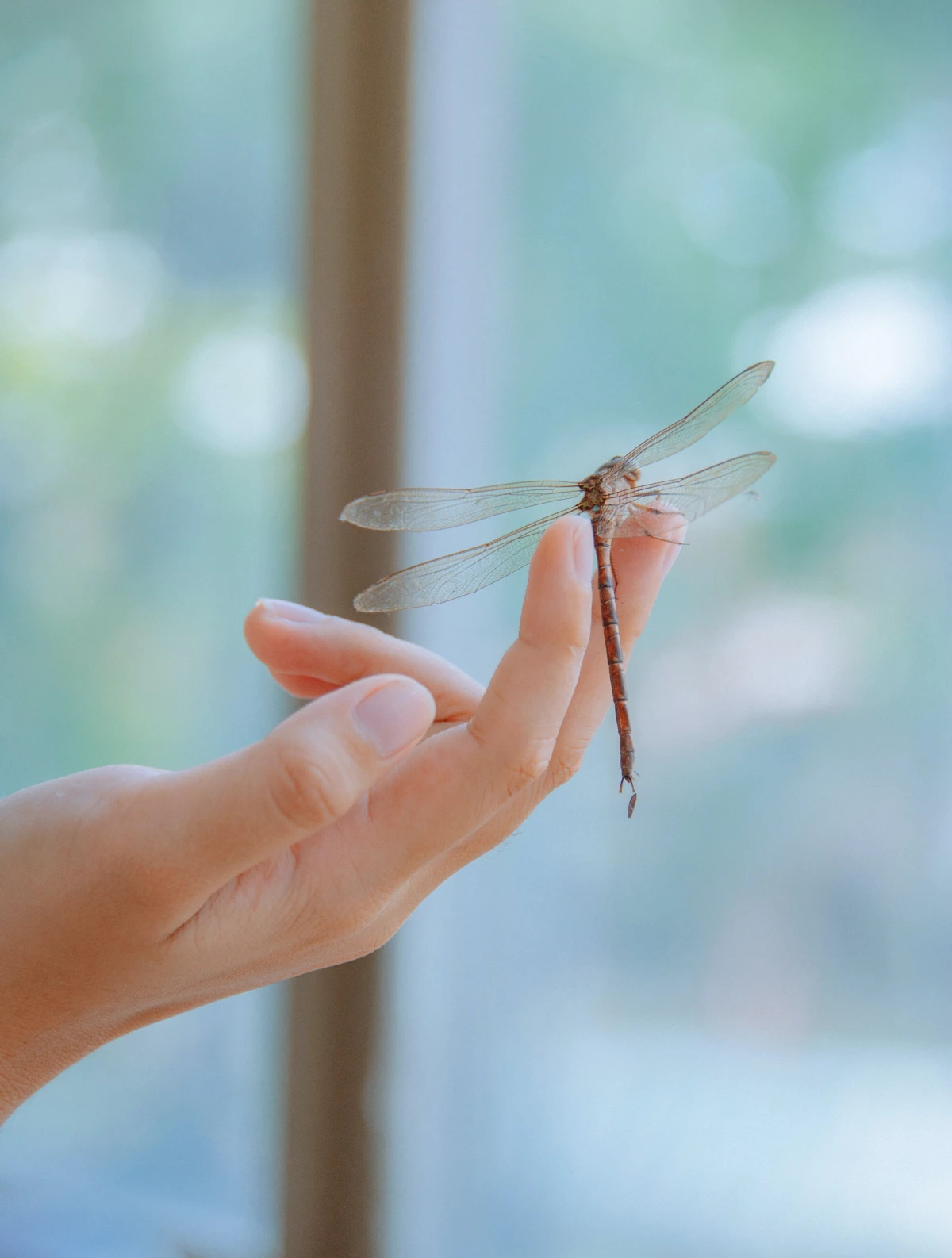
Once the nymph is all grown up, it crawls out of the water using a sturdy plant stem. This is the big moment. Its exoskeleton splits open, and the adult dragonfly wriggles out. It’s super vulnerable at this point, with its wings all soft and crumpled. It needs to hang out for a few hours, pumping fluid into its wings and letting them harden in the sun before it can take its first flight.
So, the plan becomes pretty clear, right? We need more than just flowers. We need a whole system:
- A permanent, clean body of water for the nymphs.
- Underwater plants to give them a place to hide.
- Sturdy emergent plants so they can climb out into the world.
- Sunny spots for the adults to warm up and hunt.
The Heart of the Habitat: Your Wildlife Pond
The single most important thing you can do is add water. And no, it doesn’t have to be a massive, expensive undertaking. But for a truly thriving population, a small in-ground pond is the gold standard.
You might be wondering, “Do I need a pump and filter?” For a wildlife pond like this, the answer is a big, resounding NO! The goal is calm, still water. Your plants will become the natural filter, keeping everything in balance without any noisy or expensive equipment.
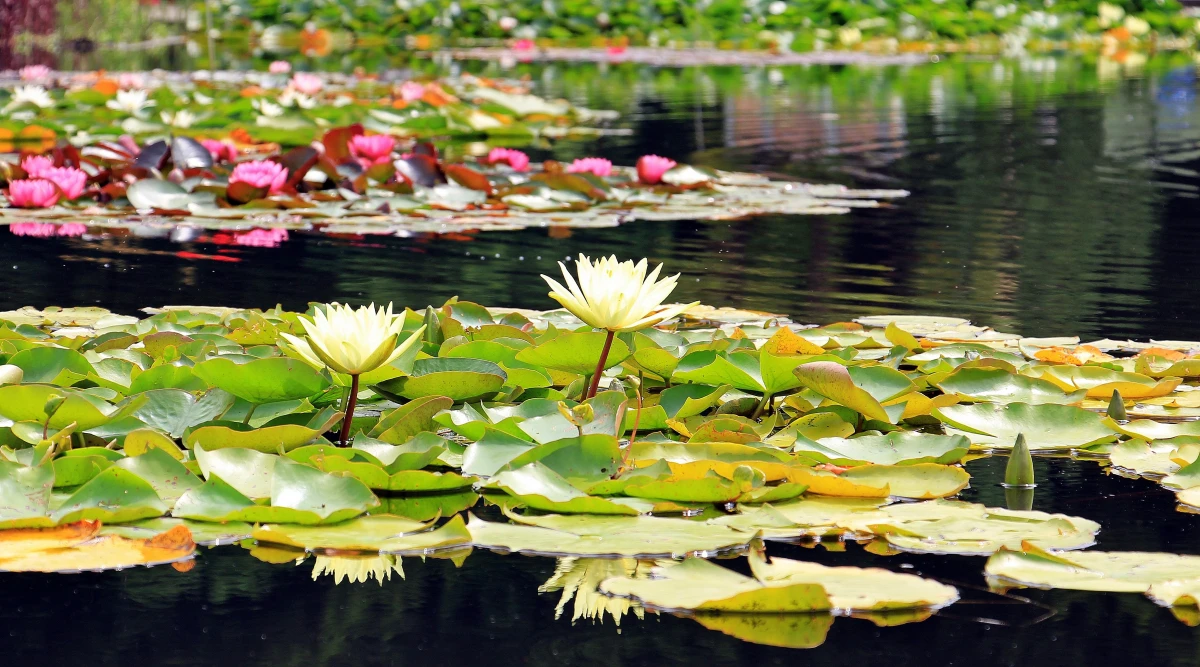
Don’t Want to Dig? Try a Container Pond!
If digging up your yard sounds like too much, you can start small. A container pond is a fantastic, no-dig option that’s perfect for renters or small patios. It’s super easy:
Quick-Start Container Pond:
- Grab a large, water-tight container with no drainage holes. A 20-gallon (or larger) tub or a half whiskey barrel is perfect.
- Place a few bricks or flat stones inside to create a shallow “shelf.”
- Add one emergent plant, like Pickerelweed, resting on the shelf so its base is just underwater.
- Drop in one submerged oxygenating plant, like Hornwort, for the deeper section.
- Fill it up with rainwater or dechlorinated tap water. That’s it!
Building a Small In-Ground Pond
Ready to go for the full experience? Let’s talk basics. First, find a spot that gets at least six hours of direct sun a day. This is non-negotiable. Sun warms the water for the nymphs and gives the adults the energy they need to fly. Try to avoid placing it right under a big tree, or you’ll be fishing out dead leaves all autumn.
When it comes to the actual build, a pond that’s about 6 feet by 4 feet is a great size. The key is varied depth. Create a shallow shelf around the edges, about 8-12 inches deep, for your emergent plants. Then, have it drop off to a deeper central area of at least 18-24 inches. This deeper spot is crucial in colder climates, as it ensures the pond won’t freeze solid, giving nymphs a safe place to overwinter.
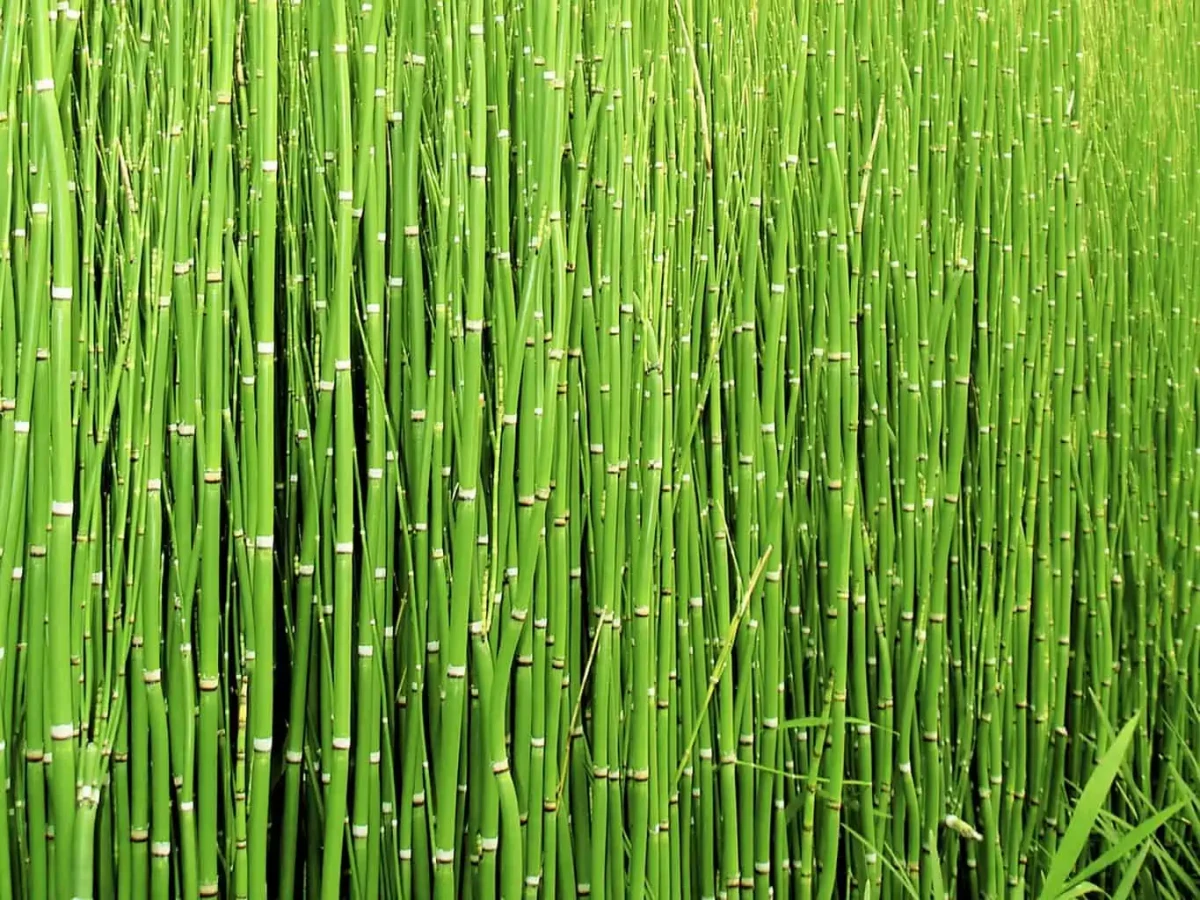
Heads up! Before you start, here’s a rough shopping list to make it feel less intimidating:
- A flexible 45 mil EPDM pond liner
- Protective underlayment (old carpet or blankets work in a pinch)
- Edging rocks or flagstones
- A few select aquatic plants
- A shovel and a level
The easiest method is to dig your hole, lay down the underlayment, and then fit the liner. Expect to pay around $1.00 per square foot for a good liner. So, for a 6×4 pond (don’t forget to account for depth!), you’ll probably need a liner that’s about 10×8 feet, which will set you back about $80-$100. It’s a weekend project that can easily be done for under $200, all in.
One more quick tip: Make sure one side of your pond has a gentle slope or a few well-placed rocks that create a ramp. This is a lifesaver for any chipmunks, birds, or other critters that might accidentally fall in.
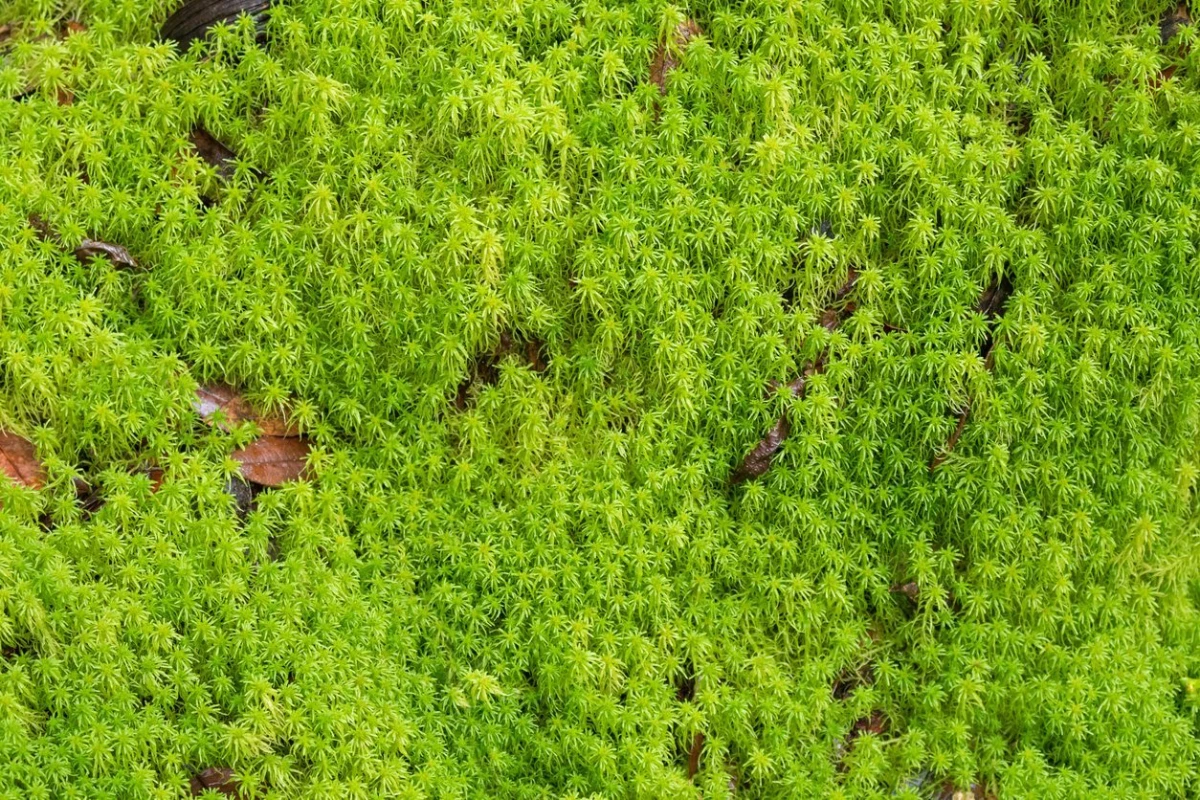
The Golden Rule: Absolutely NO Fish
I have to be crystal clear about this. If you are building this pond for dragonflies, you cannot add fish. Not goldfish, not koi, not even little mosquitofish. They will happily devour every single dragonfly nymph they find, turning your nursery into a lunch buffet. This is the #1 mistake people make. Instead of fish, you’ll be rewarded with a different kind of visitor. A fish-free pond is an open invitation for frogs and toads, which adds a whole other layer of life and sound to your garden.
Planting with a Purpose
Okay, your pond is in! Now for the fun part: plants. But don’t just grab whatever looks pretty. We need to choose plants based on the job they do. A quick heads-up on pricing: you can usually find healthy aquatic plants for between $10 and $30 apiece at local nurseries or online.
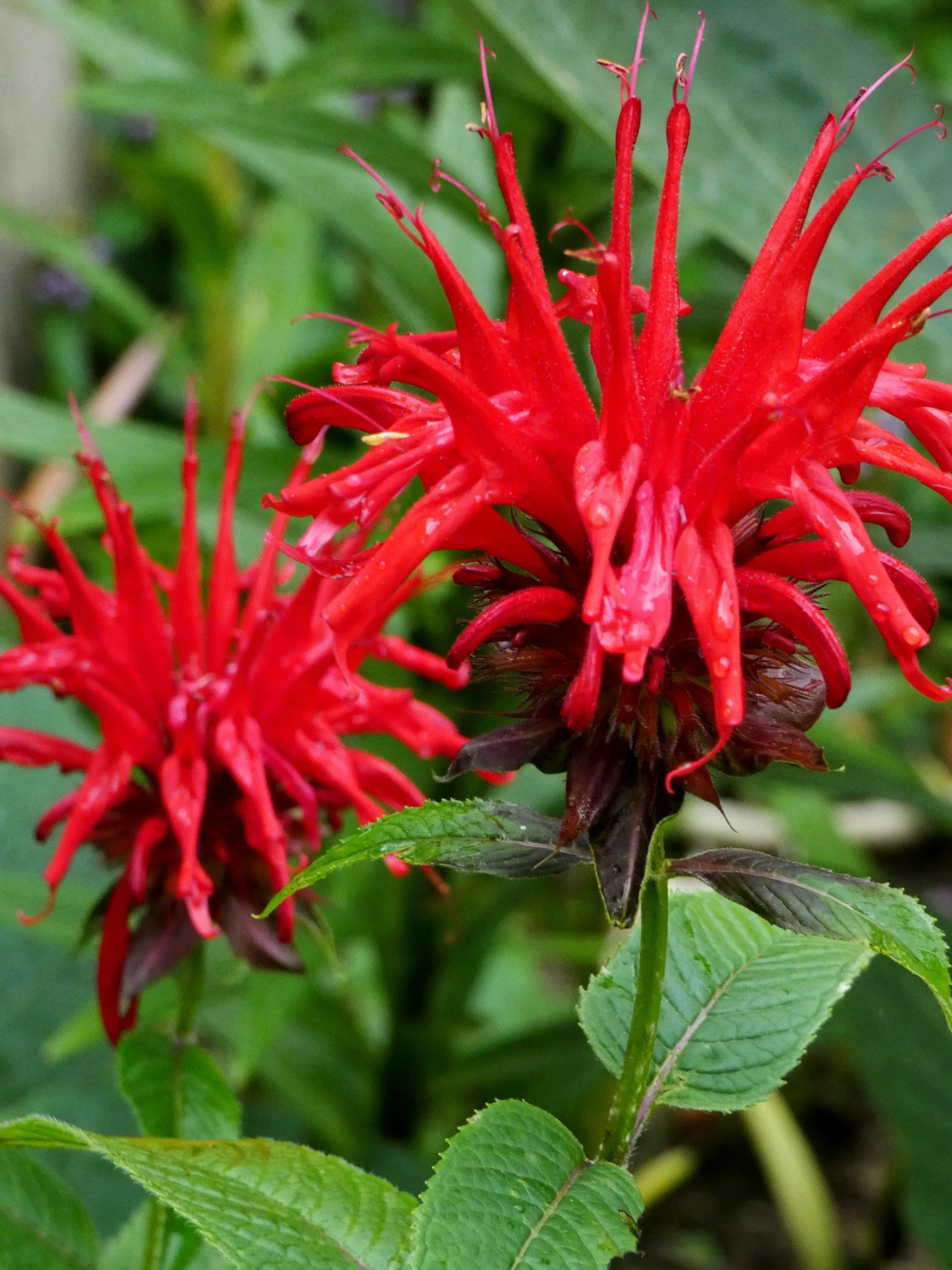
A common pitfall here: do not use regular garden soil in your aquatic pots! It’s packed with fertilizers and organic matter that will leach into the water and cause a massive algae explosion. Always use special aquatic soil or simply use washed pea gravel to anchor your plants.
Here’s how to think about your plant selection:
- The Nursery (Submerged Plants): These are the underwater workhorses. Nymphs use their leaves like a jungle gym to hide and hunt. A great choice is Hornwort, a free-floating oxygenator you just weigh down and drop in.
- The Launching Pad (Emergent Plants): These are rooted in your shallow shelf, but their stems grow tall and proud out of the water. They are the absolute key for dragonfly reproduction. Pickerelweed and Arrowhead are fantastic choices with strong stems perfect for emerging.
- The Lounge (Floating Plants): Plants like a classic waterlily provide shade to keep the water cool, which helps reduce algae. The lily pads also make great resting spots for adult dragonflies. Just be careful—avoid aggressive, invasive species like Water Hyacinth at all costs. Always check your local regulations.
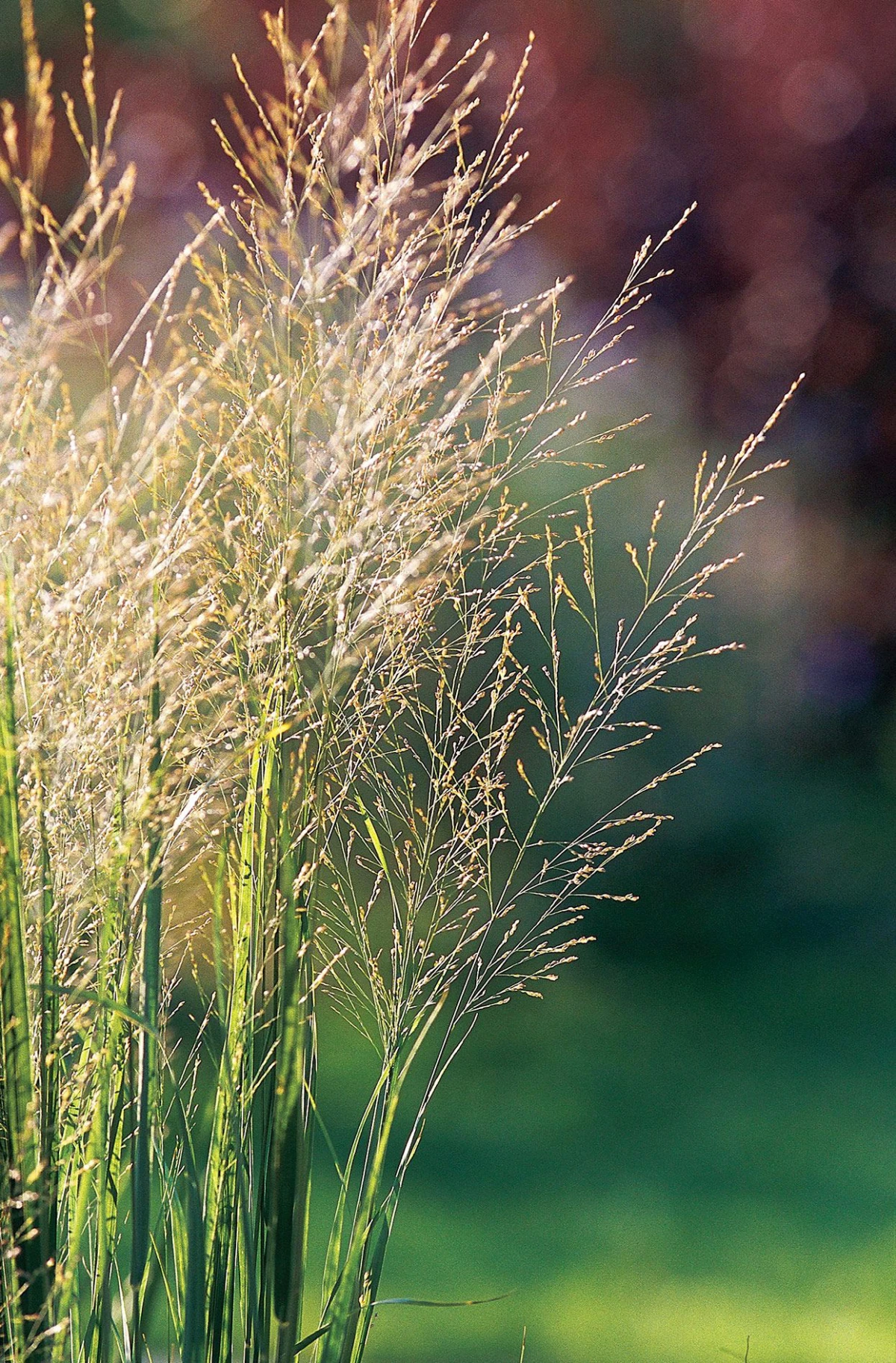
Designing the World Around the Water
The pond is the nursery, but the area around it is the hunting ground. Adult dragonflies are solar-powered, so they need warm, sunny spots to perch and scan for food. You can easily create these by placing a few flat, light-colored rocks near the water’s edge. I always put one where it will catch the first morning sun.
Also, stick a few thin bamboo stakes or sturdy twigs in the ground around the pond, from two to five feet high. It sounds almost too simple, but dragonflies absolutely love these artificial perches.
And what about those flowers we talked about? Well, their job isn’t to feed the dragonflies directly. Their job is to attract the food. By planting drifts of native flowers like Coneflower, Joe-Pye Weed, and Goldenrod, you’re essentially setting up a buffet of gnats, flies, and other small insects for your dragonflies to feast on.
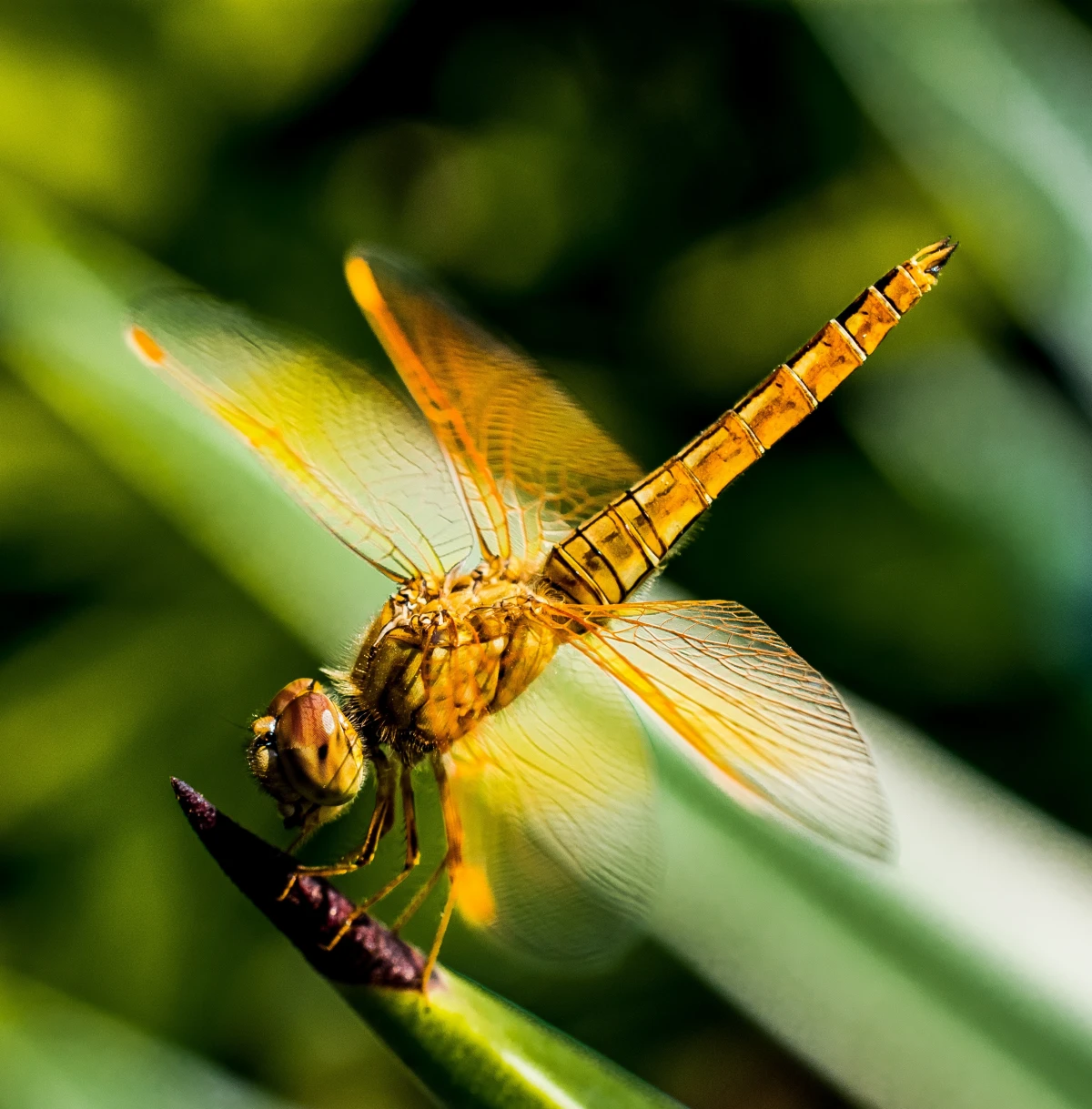
A Quick Word on Maintenance and Problems
Nearly every new pond goes through a green “algae bloom” phase. Don’t panic and don’t use chemicals! This is a normal part of the process. As your other plants grow, they will outcompete the algae for sunlight and nutrients, and the water will clear on its own.
Worried about mosquitoes? A healthy pond with dragonfly nymphs will take care of them for you. For a brand new pond, you can use a “Mosquito Dunk.” It’s a natural bacterium that kills mosquito larvae but is completely harmless to everything else (including nymphs, birds, and pets).
As for seasonal care, it’s pretty simple. In the fall, trim back any dying foliage before it sinks into the pond. If you have a lot of trees, a temporary net can keep leaves out. In the spring, just do a quick clean-up of any debris that made its way in over winter.
A Final, Important Thought on Safety
This is critical: any body of water, no matter how shallow, is a risk for small children. If kids will be in your yard, you MUST take safety precautions. This could mean a safety fence or a design that’s too shallow to be a hazard. Please check your local rules on this—safety always, always comes first.
Building a dragonfly habitat is so much more than just a garden project. You’re becoming the caretaker of a tiny, intricate ecosystem. And I promise, the first time you watch a brand new, shimmering dragonfly emerge from a plant in your pond, dry its wings, and take to the sky… you’ll get it. You haven’t just attracted an insect; you’ve helped create a little piece of wild magic, right in your own backyard.
Inspirational Gallery
The right depth for your pond is a game of zones. For dragonflies to thrive, you need variety. Aim for a shallow ‘beach’ area, just a few inches deep, where nymphs can easily crawl out. A middle zone of 12-18 inches is perfect for emergent plants like Pickerelweed. Finally, a deeper pocket of at least 24 inches provides a safe overwintering spot for nymphs, keeping them below the ice line in colder climates.
A single dragonfly can eat hundreds of mosquitoes per day.
That’s not an exaggeration. The adult dragonfly is a flying marvel of pest control, but the real work starts in the water. Their nymphs have an insatiable appetite for mosquito larvae. By creating a dragonfly pond, you’re essentially building the most beautiful and effective mosquito trap imaginable, one that works 24/7 without chemicals or electricity.
Adult dragonflies need places to rest, hunt, and warm up. Simply leaving the area around your pond a little wild is a great start. Think vertically!
- Tall Reeds: Plants like Blue Flag Iris or Cattails provide natural perches.
- Sun-warmed Stones: A few flat, dark rocks at the pond’s edge become perfect solar charging stations.
- Bare Twigs: A strategically placed dead branch or a few bamboo canes stuck in the ground offer excellent lookout points for spotting prey.
What about algae? Won’t my pond turn into green soup?
A new pond often goes through an algae bloom phase, and that’s perfectly normal! Resist the urge to use chemical algaecides, which can harm nymphs. The solution is balance. Introduce submerged, oxygenating plants like Hornwort (*Ceratophyllum demersum*) and floating plants like water lilies. They compete with algae for nutrients and provide shade, naturally clearing the water over time.
Pre-formed Pond Liner: A quick and easy solution, perfect for small gardens. These rigid plastic or fiberglass shells offer a defined shape and depth, taking the guesswork out of the design. They are great for beginners but offer less creative freedom.
Flexible EPDM Liner: For a more natural, custom shape, a high-quality rubber liner like Firestone PondGard is the professional’s choice. It allows you to design a pond that fits your landscape perfectly, with gentle slopes and custom depths. It’s more work to install but offers superior durability and design potential.
Nearly 80% of a dragonfly’s brain power is dedicated to sight. Their compound eyes, containing up to 30,000 individual lenses, give them an almost 360-degree field of vision.
- They provide brilliant, free pest control.
- Their presence indicates a healthy, balanced local ecosystem.
- They offer endless entertainment with their aerial acrobatics.
The secret to gaining these garden allies? It’s as simple as giving them water. A clean, fish-free pond with native plants is the single most important feature for establishing a thriving dragonfly population that will return year after year.
Don’t have space for a full pond? You can create a mini-oasis in a container. A large ceramic pot (with the drainage hole sealed), a galvanized stock tank, or even a recycled bathtub can become a vibrant dragonfly nursery. Just add a few large rocks for emergence, a brick or two to create different water levels, and a couple of small aquatic plants like Dwarf Cattail or Water Hyacinth.
The number one mistake (after adding fish): Making the sides of your pond too steep and smooth. Nymphs need to physically crawl out of the water to emerge as adults. A sheer, slippery liner wall is an impossible climb. Always ensure you create a gently sloped ‘beach’ with gravel or ensure plenty of sturdy plant stems are trailing into the water to act as ladders to their new life in the air.










